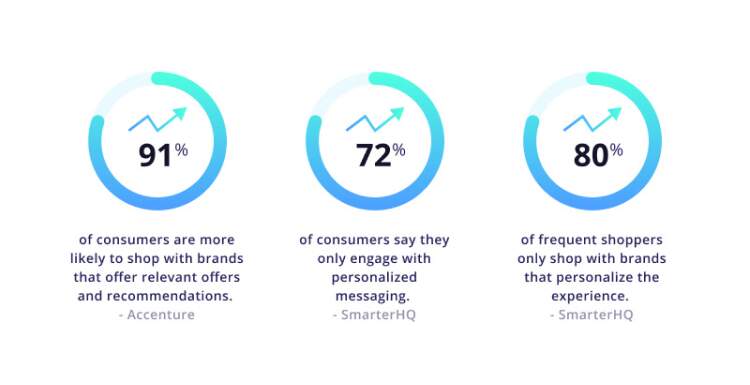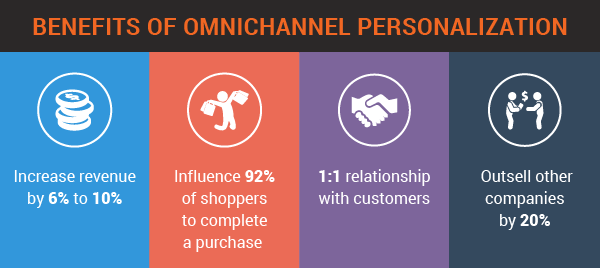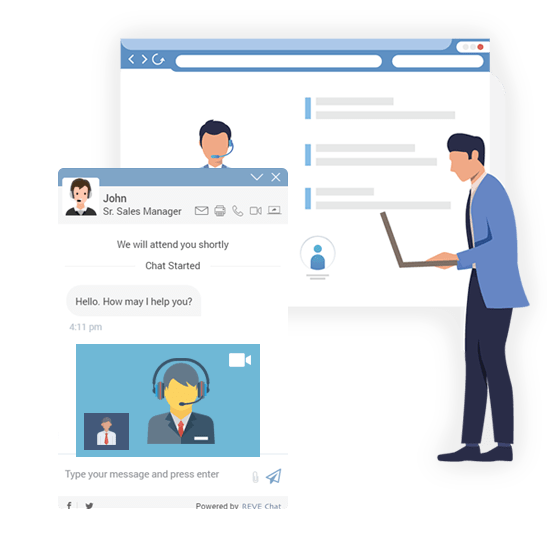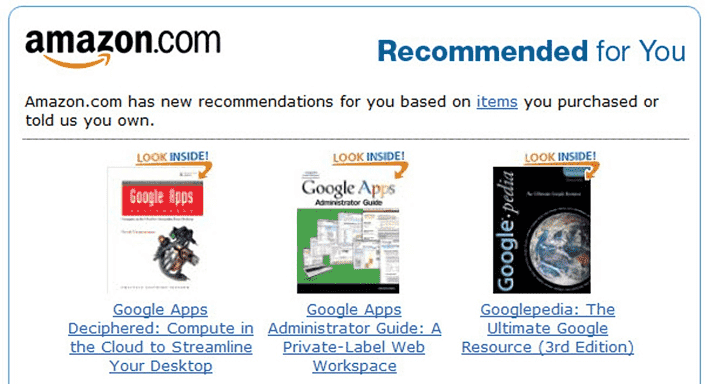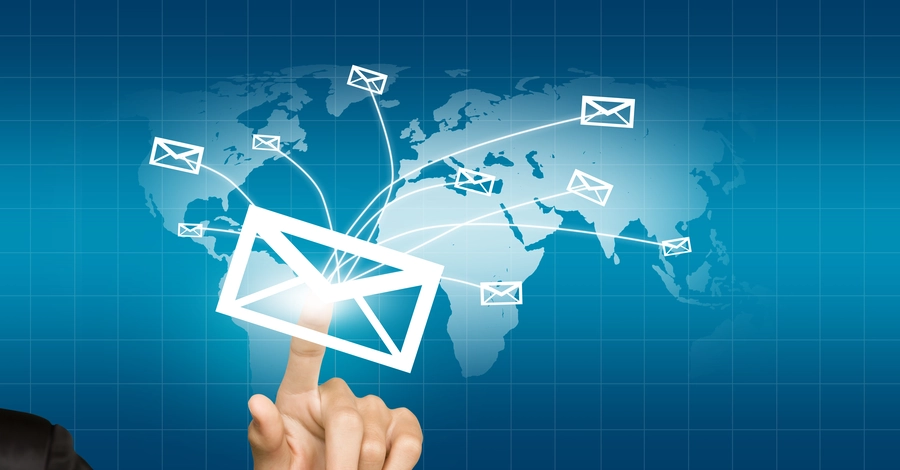8 Ways to Provide Personalized Customer Service
- May 13, 2021
- 12 mins read
- Listen

Table of Content
Customers not only want a seamless experience but also expect brands to provide them a unique and personalized experience throughout the journey.
Delivering just a smooth customer service is therefore not going to matter much beyond a point since individualized experience is valued more.
80% of consumers will make a purchase from a brand that offers personalized experiences.
Personalization has clearly become vital and businesses should focus on providing a personalized customer experience aligned with consumers’ preferences and needs.
However, before adjusting to the evolving customer behaviors, it’s equally important to understand the concept of personalized customer service.
What exactly is personalized customer service?
Personalized customer service is defined as a marketing technique that is adopted by businesses to use an individualized approach and provide tailor-made solutions to customer problems.
Customer service personalization is also about tailoring the experience to the needs of the individual customer to make their website journey smooth and hassle-free. Customers will feel more connected to a company and experience a greater sense of satisfaction when provided with personalized customer service.
- Personalization can be used to meet the expectations of each customer and deliver value based on unique tastes and preferences.
- Brands can send personalized offers and discounts to customers according to their previous journey with the business.
- Companies can make customers feel valued through personalized service and this can have a great impact on the bottom line.
Why is customer service personalization important?
A successful marketing strategy will always have considerations for giving personalized interactions to customers. In order to understand why customer service personalization is important, you need to know that more than 8 out of ten customers say that treating them like a person is how brands can win their trust.
Personalization can help businesses on many levels:
- Improved customer experience – Offering tailored service can make customers feel more satisfied and more appreciative of the experience. They are also less likely to have complaints.
- Superior customer retention – Consumers can be turned into brand ambassadors by providing a journey specific and unique to them. This will also help improve customer loyalty towards your brand.
- Better lead generation – Delivering personalized customer service is also an opportunity to gain a competitive edge over those players that are still playing by the old-world rules.
- Higher conversion rate – Personalized support and offers have the power to win over even those customers that are on the fence undecided or those merely visiting for browsing.
8 Ways to deliver personalized customer service
Delivering personalized customer service has become vital to staying competitive in the marketplace. Personalized customer engagement strategy has helped 97% of marketers report a quantifiable boost to business outcomes.
In order to achieve great results, your business needs to know the ways to deliver a personalized customer experience as it can help improve sales, conversions, and customer retention.
A business can deliver personalized customer service in many ways:
- Devise an omnichannel customer experience
- Deliver a hyper personalized experience on your website
- Map customer journey to serve better
- Use past customer experience to tailor your messaging
- Adopt a conversational approach
- Leverage the power of Artificial Intelligence (AI) & Virtual Reality (VR)
- Implement customer feedback and reviews
- Personalize your content
Now let’s look at each way in detail to thoroughly understand how to deliver personalized customer service:
1. Devise an omnichannel experience
When it comes to communicating with businesses, not all customers would prefer the same channel. While some may like to get help via live chat or social media or messaging app, others would rather prefer to shoot an email, and still, others wish to connect on the phone.
You never know which channel customers may choose or use to reach you. Over 35% of customers wish to contact the same customer service agent on any channel.
In order to avoid missing out on customer communication and to provide effective support, your business needs to provide multiple touchpoints for accessing customer service.
Brands can take a leaf out of IKEA’s book and master an omnichannel experience for customers. It literally brings the showroom to you as customers can use the online tools to build their room online.
Customers can order online and pick the things up in their local store on the same day. Plus, the Swedish giant can also seamlessly coordinate the assembly of any purchase!
You need to offer a unified view of all interactions across channels by implementing an omnichannel customer experience to achieve many benefits.
- Targeted and contextual conversations have become the norm as agents are aware of the issues or channels customers previously had and this helps in delivering a personalized touch.
- Enhanced customer experience is delivered by letting customers have more options to reach out to businesses and get help easily.
- Better customer insights are gathered as all the data can be unified in one dashboard to provide a personalized touch to customer service.
- Real-time engagement is possible with customers via live chat, video chat, screen sharing, and co-browsing, to add value to the engagement.
2. Deliver a hyper personalized experience on your website
A deep understanding of customer’s behavior is at the core of delivering a hyper personalized experience. In order to deliver such an experience, a business first needs to invest in technologies and solutions that allow access to key customer information
Websites can actually be a great tool for personalization.
Brands can leverage the power of real-time data and artificial intelligence (AI) to bolster the hyper personalization approach and deliver relevant personalized support to customers. It will help customers easily connect with businesses using live chat, video chat, co-browsing, or chatbots.
Delivering more relevant content, product, and service becomes possible when hyper personalization is used.
- The use of real time messaging via live chat software can help businesses deliver personalized touch to customer service and offer answers to questions. Leveraging the key data regarding geography, demography can prove a great value in reaching out to an exact set of customers and responding to their problems.
- Customers can be delivered personalized conversations with video chat to solve more complex issues and also to enable an in-person experience. It will become possible to show things to customers and enhance their personalized experience.
- Agents can understand a customer’s website journey and ensure efficient collaboration with co-browsing and solve problems in a prompt manner. Customers can be guided through the website and shown the answers using highlighter or drawing tools.
- Businesses need to integrate AI enabled chatbot to automate responses and ensure 24×7 support. This will help scale customer support and lead generation.
3. Map customer journey to serve better
The purpose of mapping a customer journey is to know in detail how customers travel through different touchpoints and how they perceive your business at each stage of the way.
In order to map a customer journey, you first need to know the touchpoints a customer can use to get in touch with your brand. Touchpoints could be anything whether your website, social media ads, customer service team, on-site reviews or customer feedback, or surveys.
You then need to know what the customer’s actions are for each of the stages, what their motivations are, do they have any doubts, and what obstacles they face in each of the stages.
Here is how businesses can use client journey insights to deliver a personalized customer experience.
- Companies can enhance customer experience by identifying the different touchpoints and by assessing what touchpoints need work.
- Mapping customer journeys can improve customer engagement with your company and help you address their needs at an individual level.
- Customer issues can be rectified, new potential customers can be discovered and new consumer touchpoints can be added by using a customer journey map.
4. Use past customer experience to tailor your messaging
Knowing your customer better is always the first step towards delivering them personalized interactions and experiences.
When the past customer data is available, the customer support team can access the information and reference the past orders or issues as examples to personalize the experience.
When it comes to examples of personalization, Amazon does it better than most brands. In fact, the e-commerce giant takes personalized advertising to the next level by offering contextually relevant offers and experiences to customers.
Amazon not only tailors product recommendations based on the customers’ purchase record and search history but can also use algorithms to personalize the homepage of a customer.
Keys ways businesses can tailor messages by knowing customers’ interactions:
- Use website analytics to understand user behavior in-depth and then use the data to personalize the experience.
- Track all social media comments and analyze responses of email subscribers to know what customers think and expect from your business.
- Conduct customer surveys and opinion polls to get a better grasp of customer expectations from your business.
5. Adopt a conversational approach
Conversing with customers is an art and brands need to master that.
Interactions between customers and companies need to feel like human communication without ever giving a slight hint of automation.
Customers also expect to be treated like a person not as a project or opportunity and this needs to be considered all the time.
If customers don’t find the experience personable and feel like they lack empathy, they won’t stay loyal for long.
Adopting a conversational approach should be the way forward to improve the customer service experience (CX) and make conversations feel people-driven.
- Companies need to build a culture of open communication so that the support team can learn how to deal with customers with due grace and politeness.
- Agents need to show empathy and never make the mistake of treating customers just as numbers as this approach make them come across as pushy or desperate for a sale.
- Always use customer’s first names as this makes them feel valued and also delivers an air of importance to them in conversations.
- Human touch should be at the core of customer service which means the support team needs to put themselves in the customer’s shoes and look to add value rather than the expected value.
6. Leverage the power of Artificial Intelligence (AI) & Virtual Reality (VR)
61% of consumers say they would prefer retailers that offer AR experiences.
More brands are adopting AR and VR technologies to take the customer engagement game to the next level and redefine the landscape of service and support.
Both are immersive approaches and can be leveraged to drive great innovation in customer experience and engagement. The purpose of using AR and VR is to fill the gaps between the real-world and online experiences and ensure customers get the kind of sensory feel they do while being in a store.
While no technology can replace the physical testing of products and talk to agents, brands can still combine the best of AI, AR, and VR to elevate the level of experience to customers.
- Automate personalization with a chatbot by allowing sales and support teams to use AI-powered chatbot and have conversations with visitors, answer their questions and convert them into qualified leads.
- Promote experience over products and services by implementing AR/VR in your marketing strategy and ensure a personalized and memorable experience.
- Brands can replicate the in-store experience by relying on the concepts of augmented and virtual reality to bridge the gap between consumers’ desire for great service and reluctance to visit the store.
7. Implement customer feedback and reviews
Customers expect brands to listen to them and stay open for feedback.
55% of respondents would stop using the products or services of a company that ignored their feedback.
Feedback can be an extremely helpful tool for companies to improve their products, services, and procedures in alignment with the evolving tastes of their customers. In fact, asking for and collecting feedback is a good example of customer service personalization as it shows customers they are valued and their opinions are appreciated.
The value lies not in collecting feedback but also in implementing the suggestions so that customers can feel an air of individuality.
Any feedback received should be handled with a great deal of professionalism.
- Your company needs to acknowledge the feedback with a proper personalized response so that customers feel like their opinions are considered.
- Making relevant changes based on valid feedback should always be a priority as this can prove very helpful in rectifying the process or procedures that customers find fault with.
- Customers deserve to know whether their feedback is listened to and if yes, you can appreciate customers for their response and let them know about the implementation.
8. Personalize your content
If your website is showing the same content to all types of visitors, then your customer engagement strategy is flawed in terms of personalization.
In today’s time, when personalization rules the roost, your business just can’t afford to speak directly to each visitor.
92% of marketers report using content personalization in some way. Content personalization is the need of the hour as it can help you show different content and call to action (CTA) to each visitor.
Customers need to feel as if the page is designed for them and this can only happen when they are shown personalized content.
So, brands can think of leveraging all the customer data available to them, including those related to geography and demography to make their content strategy more powerful and personalized.
Step up your support strategy with personalized customer service
Personalized customer service can be your differentiating factor. And personalized customer experience is not just limited to support but can also be implemented across all the customer touchpoints. Having a human touch is an important aspect of personalized customer service but you can also scale that by leveraging AI and VR and augment their hyper personalized experience
Brands need to fast align with the evolving preferences of customers and understand that a strategy of personalized customer experience is the new demand. The focus needs to be on adopting a personalized approach as this is the only way to gain the trust of customers and improve different metrics.

